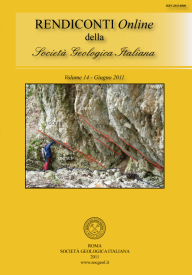
Implementation of the Italian hydrogeological cartographical guidelines (CARG Project)
Lucio Martarelli (*) & Anna Rosa Scalise (*)
(*) Dipartimento Difesa del Suolo - Servizio Geologico d'Italia, ISPRA, Via Curtatone 3, 00185 Roma. E-mail: lucio.martarelli@isprambiente.it
DOI: https://doi.org/10.3301/ROL.2011.08
Volume: 14/2011
Pages: 86-93
Abstract
This work is aimed to contribute to the revision of the Italian hydrogeological cartographical guidelines, after the last field-testing promoted by the Geological Survey of Italy (now ISPRA – Land Resources and Soil Protection Dept.) in representative hydrogeological situations of the Italian territory, taking into account that a good quality hydrogeological map has to be based on the collection of field survey measurements, in order to allow a characterization of quantitative and protection management aspects of groundwater resources.
The current Italian guidelines propose to distinguish the hydrogeological complexes based on relative permeability degree using a colour scale following a chronological criterion. But in this way, the complex ages and not the hydrogeological features are evidenced and, thus, the use of a colour scale strictly related to the permeability degree of the hydrogeological complexes is here proposed.
The official guidelines suggest the representation of surface and spring waters based on annual mean discharge. This rule, as a suitable long time of discharge measurements to calculate the annual mean discharge is not always available in the Italian territory sites, may be modified allowing the representation of both surface and spring waters also by mean discharge values, obtained after field measurement surveys.
It is also significant to evidence the opportunity of including in the guidelines some specific symbols for: i) boundary of suspended aquifer recharge areas; ii) "open" (i.e., allowing hydraulic exchange) and "closed" (i.e., not allowing hydraulic exchange) groundwater divide; iii) groundwater drainage process; iv) lake monitoring station; v) "linear" spring; vi) area affected by intense tectonic lamination.
Keywords
Get Full Text